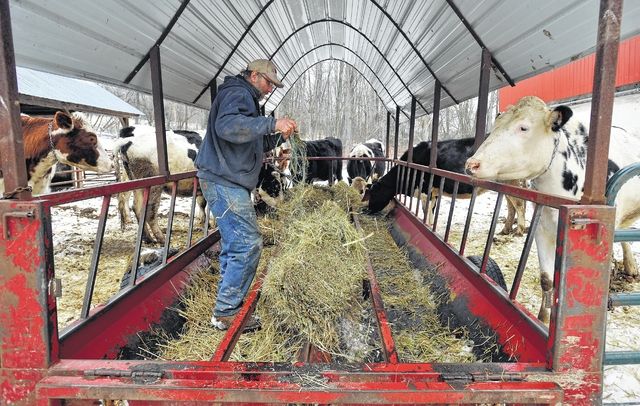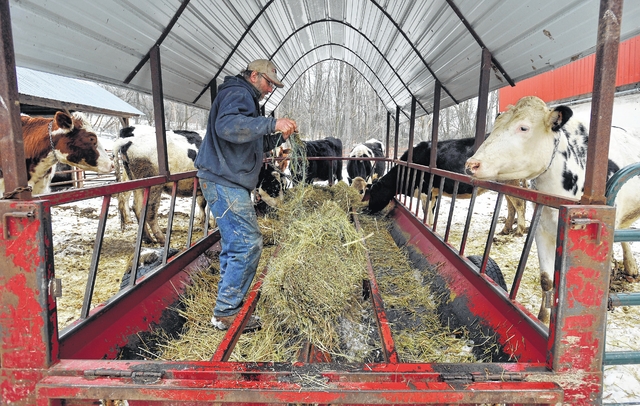By Geri Gibbons
ggibbons@timesleader.com
When children head back to school in a few weeks, they can look forward to lunches that with more fruits, vegetables and whole grains to meet calorie requirements and ensure age-appropriate meals, according to the U.S. Department of Agriculture.
Those lunches, however, will not include whole milk.
Arden Tewksbury, manager of the Progressive Agriculture Organization, a dairy farm advocacy group, who takes his milk whole and often chocolate, disagrees with the mindset that precludes whole milk from being served through the school lunch program.
Fat, he said, is where the flavor is at.
Jim Harbaugh, football coach at the University of Michigan, seems to agree with him.
In an answer to Brady Carpenter during a press conference in early August, when the 6-year-old asked how much milk a young person aspiring to be a quarterback should drink, the coach said, “Drink as much milk as your little belly can hold. It could be chocolate milk or two percent, but the ideal milk is whole milk, as much as your body can hold.”
Tewskbury, of Meshoppen, said that beyond taste and texture, whole milk products make for healthier children in the long term.
Ray Kuzma, of Milky Ray Dairy Farm, Tunkhannock, concurs.
“If your kid is going to play sports some day, best start him off with whole milk,” he said, “providing calcium necessary for strong bones. And they call fats ‘brain food’ for a reason.”
Kuzma has questioned why the school lunch program directs the use of low- or no-fat milk, even when children are allowed to buy soda.
Tewskbury said the National School Lunch program, which prohibits school lunches from containing whole milk, make it likely that children will avoid drinking milk in its low-fat form simply because it doesn’t taste as good as its full-fat counterpart.
And Tewksbury believes he has data to prove it.
Nina Teicholz, author of the 2014 book “The Big Fat Surprise, Why Butter, Meat and Cheese Belong in a Healthy Diet,” cites a 2014 study in which Swedish researchers found that eating full-fat dairy products slashed the risk of type 2 diabetes.
In the study of more than 2,500 people, those who ate eight or more portions of high-fat dairy products a day had a 23 percent lower risk of developing the condition than those who ate one portion or less.
Tewksbury also shares anecdotal incidents of area athletes who credit their physical prowess with drinking milk.
“I don’t believe people get fat from drinking milk,” he said. “They gain unnecessary weight from eating junk food and not getting enough exercise.”
Having served on the Elk Lake school board for over 50 years, Tewskbury said he is driven not as an advocate for dairy farmers, but out of concern for the children he serves.
He considers unreasonable the mandates of the USDA that essentially say that whole milk is a bad thing that school lunches need to drop.
Tewskbury is equally adamant that any milk product, no matter the fat content, trumps imitation milk products.
“I was recently served something that was supposed to be milk, but really wasn’t,” he said. “I couldn’t even drink it.”
According to the USDA, whole and 2-percent fat milk contain unhealthy amounts of fat for those over the age of 2. The agency encourages parents to serve milk cold and to find creative ways to serve milk and other dairy products to make their consumption by children more likely.
Reach Geri Gibbons at 570-991-6117 or on Twitter @TLGGibbons






